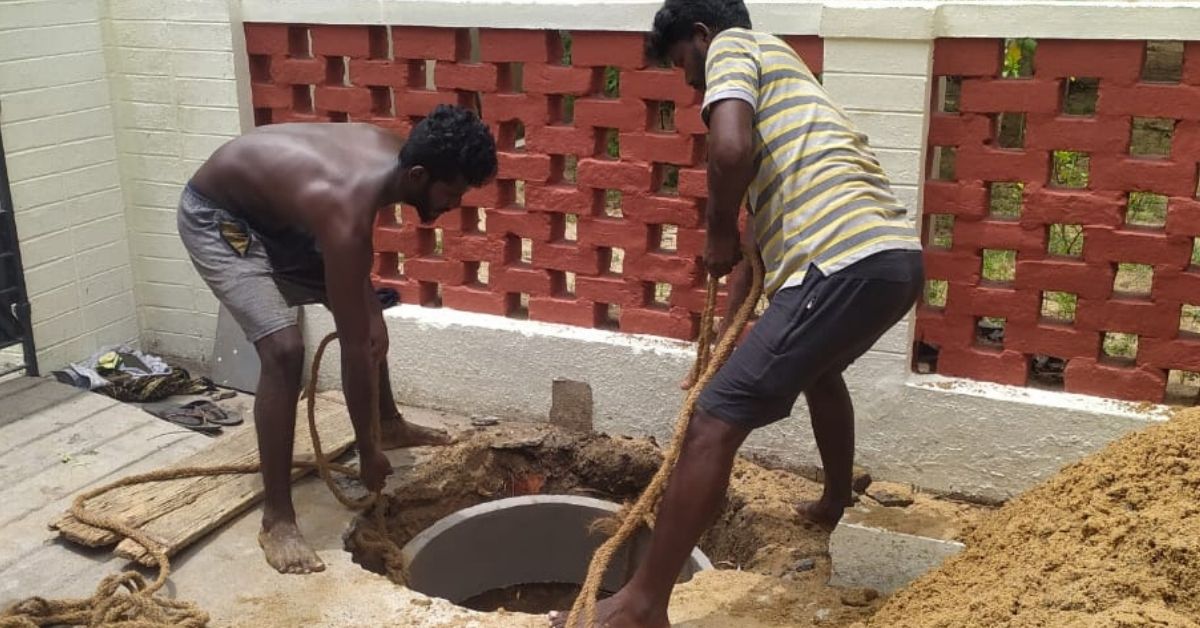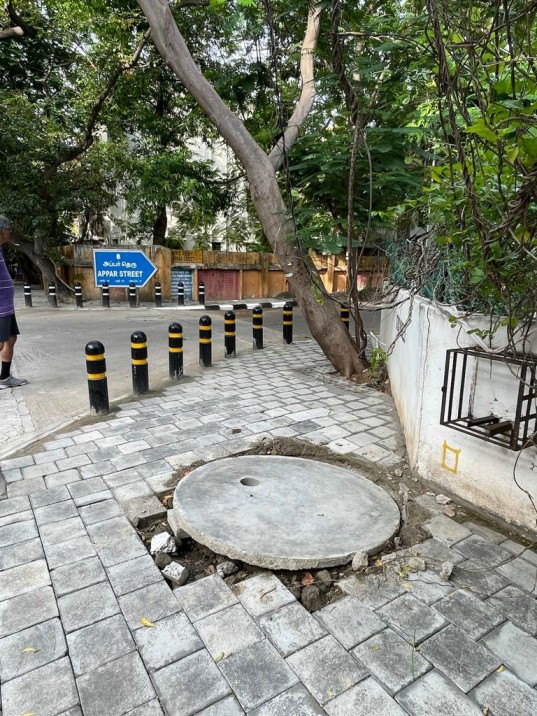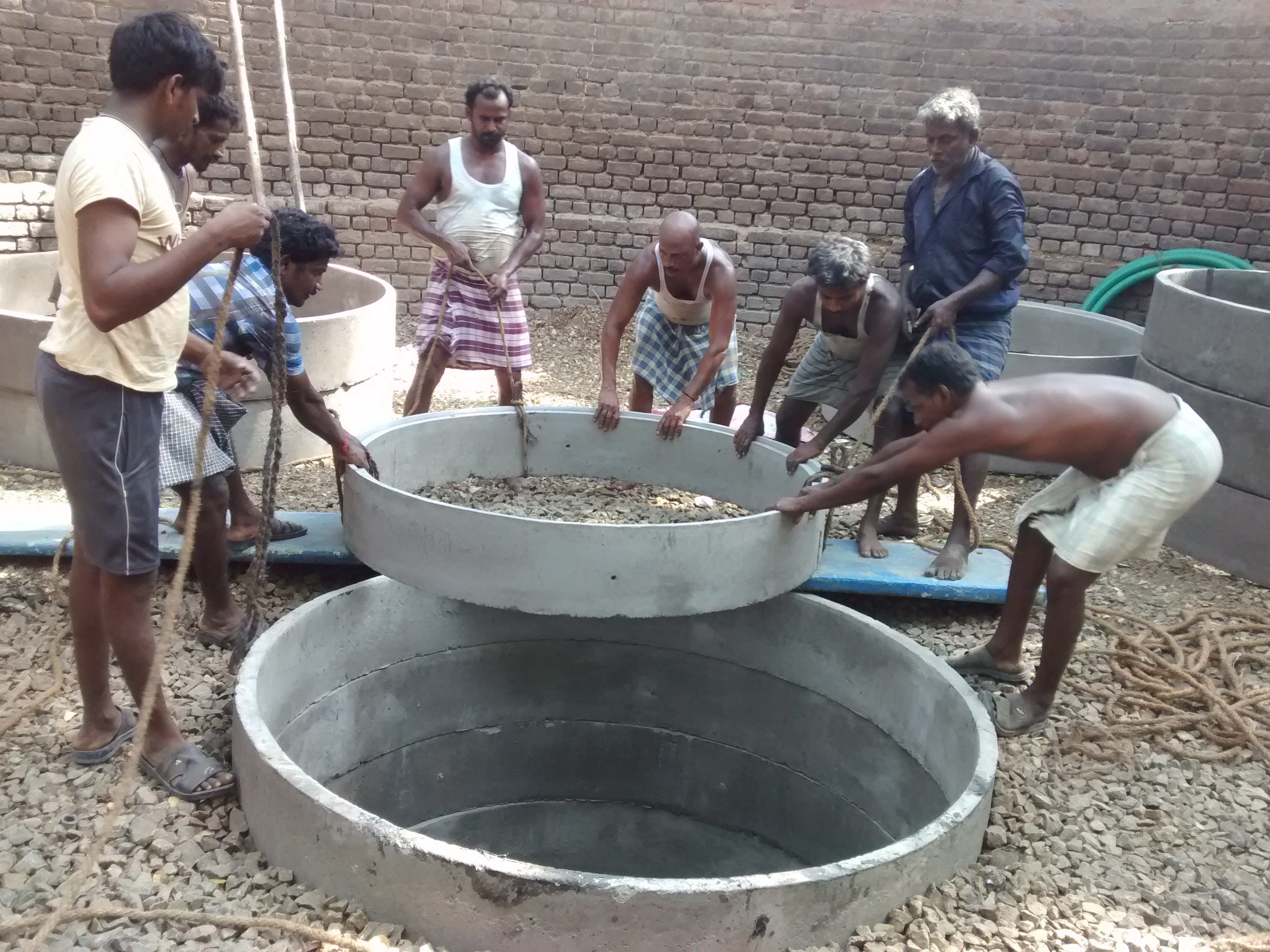From Floods to Recharging Groundwater, RWA Helps 800 Homes Deal With Water Woes
Of more than 75 rainwater recharge wells in Chennai's Kalakshetra Colony, the resident welfare association (RWA) has financed the construction of 28, to combat the torrential downpours and floods.

“When Chennai had just begun to undergo a massive water shortage crisis in the late 1990s, I remember about five of us visiting nearby residents to educate them about the importance of conserving rainwater,” says Sridhar Rao Chaganti (69), a retired resident of Kalakshetra Colony in Besant Nagar, Chennai.
Today, the prudence of his colony’s resident welfare association (RWA) has helped its inhabitants combat the city’s third wettest November in 206 years to a great extent.
“In 2003, the Tamil Nadu government mandated all buildings in the state to include rainwater harvesting structures. However, the policy took into account excess rainwater collected only on the terraces, not in open spaces within a residential area or on the roads beside them. Our colony undertook the initiative to construct rainwater recharge wells in these areas,” adds Sridhar.
Now, the colony in Besant Nagar has as many as 75 rainwater recharge wells within its premises spread across six major roads – Rukmini Road, MGR Road, Beach Road, Arundale Beach Road, Appar Street and Mahalakshmi Avenue.
While the Kalakshetra Colony Welfare Association (KCWA) is credited with financing the construction of 28 of these, the rest were built with the help of the Greater Chennai Corporation (GCC). Excess rainwater percolated in the wells has prevented flooding in streets alongside 800 residential units, of both independent houses and apartment complexes.
“The initiative officially began in 2003 and 11 rainwater recharge wells were set up in the following year,” Priya Rajshekhar (54), secretary of the KCWA, tells The Better India.
She adds, “Every couple of years, at least 40 per cent of the KCWA’s annual membership fees is used for refurbishing the 75 plus wells. This includes desilting, replacing broken lids and clearance of weeds. This year, we also poured coconut oil into the wells, creating a film over the groundwater that prevents mosquitoes from breeding.”
The first rainwater wells in the neighbourhood were constructed even earlier, says another resident Shanti Krishnan (66). “Two wells in front of my house were built in 1999 when Sridhar and I were the only members of the KCWA. I remember the GCC used to provide a medicinal spray called Vectobac to prevent mosquito menace,” the social worker recalls.
“In 2002, a major telecom company knocked out the existing rainwater pit structures in the colony to accommodate their underground cables. I fought tooth and nail and they eventually sponsored the construction of a few rainwater harvesting wells with rings, of which some were boreholes. We had also put a ventilator-type tile to filter the water,” she adds.
Beyond traditional rainwater conservation

A standard recharge well in Kalakshetra Colony is 3-5 feet (ft) wide and 10-15 ft deep, costing between Rs 10,000 and Rs 23,000. Contractual labourers dig up to the point they hit sand, place concrete rings walls to retain the earth and cover the construction with a perforated lid, completing the process in as less as four hours. In some areas, there are accompanying catchment pits that help direct the rainwater into the wells.
Built between residential compounds and tarred roads, these wells have also helped maintain and recharge neighbourhood’s groundwater levels. “Earlier, we could access the groundwater at a depth of around 15 feet. But after this year’s rains, the water table has risen to 1 foot,” says Priya, adding, “We get copious water supply from the GCC, so most residents don’t use the groundwater for consumption or cleaning, but it is always a reliable alternative during times of scarcity.”
In 2016, Priya had a couple of rainwater recharge wells constructed about two feet away from the trunks of avenue trees alongside her home. She had done so on the recommendation of TD Babu, a marine biologist who founded SPARK, an organisation that works on environmental projects across Chennai.
“Despite regular watering, the trees may not absorb enough water as their roots run very deep. This weakens their foundation and makes them prone to falling during extreme weather conditions. I had these wells constructed right before Cyclone Vardah. While some avenue trees on the nearby main road couldn’t survive the storm, the ones next to my house did,” she adds.
Six years ago, the KCWA began roping in volunteers for door-to-door awareness campaigns in a bid to encourage residents to build recharge wells outside their residences, in addition to their independent rainwater harvesting structures.
“We suggested that the GCC construct rainwater recharge wells instead of the stormwater drains (SWDs) they had proposed during the concretisation of Rukmini and MGR roads,” adds Priya.
Why SWDs aren’t the answer

The KCWA has been consistently supported in its rain conservation efforts by Dr Sekhar Raghavan (74), the director of Rain Centre, a Chennai-based organisation that has been promoting rainwater harvesting methods since 2002. According to Sekhar, rainwater recharge wells ensure minimal wastage of “precious rain” and make for a much more viable alternative than SWDs in a city like Chennai, where the earth is predominantly sandy and readily absorbs rainwater.
“Constructing an SWD permanently damages a potential source of groundwater. Built on the side of the roads, they collect urban run-off which is then dumped into the sea. They are paved systems which prevent the percolation of rainwater into the ground and essentially contribute to an anti-harvesting process. In fact, back in 1999, we filed a public interest litigation (PIL) to stop the GCC from constructing new SWDs in Besant Nagar, but it was disposed of,” says the rainwater specialist who is also a resident of Kalakshetra Colony.
“Till date, vendors in the area wash their utensils over the SWDs in Besant Nagar and dump leftover food and other waste into it. This blocks the drainage system and causes dirty water to overflow into the main road,” says Priya.
Despite the KCWA’s best efforts, she adds, a few recharge wells in Arundale Beach road also overflowed this year, causing flooding in the colony for the first time in at least two decades.
“This didn’t happen even during the 2015 rains. Some residents reported flooding in their underground garages and basements, which was most likely due to the recent paving of Arundale Beach road and the nearby Tiger Varadachari road. The concrete doesn’t allow the ground to absorb rainwater, which eventually overflows into the low-lying areas,” she notes.
As recharge wells can’t be dug up alongside concrete roads, the KCWA will be undertaking the construction of 6×30 ft serrated pipes in the areas affected due to this year’s rains. “I am already in talks with GCC officials to build four additional structures. They have assured us that their engineers will come up with a long-term solution,” she says.
“Such things happen once in a while, and residents expect immediate solutions which aren’t possible. Groundwater levels have lately reached their saturation point, but they’ll stabilise once the rainfall recedes,” says Sekhar, adding, “If we construct open wells or tube wells, we can start using the groundwater itself, which will be consistently replenished during rains. For this, however, residents need to reduce their reliance on the municipal body’s supply.”
(Edited by Yoshita Rao)

Similar Story

Threats, Bribes No Match For Hero Who Rescues Lions, Chimpanzees From Horrifying Cruelty
From lions and tigers to chimpanzees and elephants, Chennai-based Antony Rubin has led many important animal rescue missions across Tamil Nadu. He shares why he began this work, and how he keeps going.
Read more >
If you found our stories insightful, informative, or even just enjoyable, we invite you to consider making a voluntary payment to support the work we do at The Better India. Your contribution helps us continue producing quality content that educates, inspires, and drives positive change.
Choose one of the payment options below for your contribution-
By paying for the stories you value, you directly contribute to sustaining our efforts focused on making a difference in the world. Together, let's ensure that impactful stories continue to be told and shared, enriching lives and communities alike.
Thank you for your support. Here are some frequently asked questions you might find helpful to know why you are contributing?


This story made me
-
97
-
121
-
89
-
167












